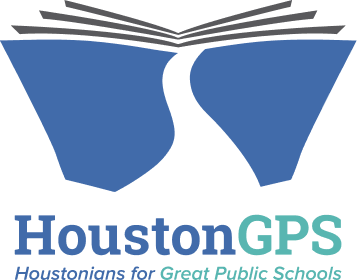Houston ISD Board Meeting Recap
November 9, 2023
If you missed the Houston ISD Board of Managers meeting last Thursday, here is a quick recap:
HISD Students Lag Behind National Average in Reading and Math : Superintendent Miles presented beginning of year (BOY) student performance data from the Measures of Academic Progress (MAP) assessment.
The charts below show a comparison between average scores on MAP nationwide and HISD student populations for both reading and math in 3rd through 8th grade. The “Growth Norm” represents a year of student growth from BOY to the end of the year (EOY).
In both subjects, 3rd grade students are almost half a year behind their peers nationally based on the average growth. Looking at student demographic information illustrates stark gaps in student outcomes for all grade levels between white students, who are performing above the national average for BOY, and Black and Hispanic students, who face significantly lower learning outcomes.


Taking a different look, the remaining charts show the average percentile for students nationwide and for HISD subgroups, including New Education System (NES) schools. Again, HISD trails behind the U.S. average in most grade levels, with NES schools experiencing an even larger gap. NES schools, which disproportionately serve students of color, are on average # percentage points behind non-NES schools in Reading and # percentage points behind in Math. HISD has a long way to go to close this urgent equity gap and must continue to prioritize resources equitably to support students who experience disproportionate barriers to learning.
HISD Students Lag Behind National Average in Reading and Math : Superintendent Miles presented beginning of year (BOY) student performance data from the Measures of Academic Progress (MAP) assessment.
HISD Board of Managers Set Goals and Constraints: The Board of Managers (BoM) formally adopted their goals and constraints into their Educational Philosophy board policy. Here are some notable insights:
3rd Grade Reading and Math: The goal targets for both subjects are set for a 15 percentage point increase, which is ambitious. The BoM chose models for disaggregated student group targets that scale throughout the five-year term of the goal. This means that the board will be expecting lower growth in the first couple of years of implementation but significantly higher growth after the structure has been firmly established in the district.
While we would like to see the early targets be a bit more ambitious, we do recognize the heavy lift of systemic changes in the district. Notably, the model chosen by the BoM approaches student needs equitably by recognizing the district’s responsibility to meet higher growth targets for student groups that need the most support.
College, Career, and Military Readiness (CCMR): This goal was updated to focus more on CCMR Outcome Bonus criteria, which are more rigorous and ambitious than the original proposal. Specifically, the BoM will be monitoring the percentage of students who are graduating Texas Success Initiative (TSI) ready with an industry-based certification with a target increase of 15 percentage points.
We support this step toward district accountability for more aligned post-secondary outcomes. While this does not quite meet our recommendation for the CCMR Outcome Bonus criteria, which includes college enrollment, this is a much stronger goal.
Special Education: The baseline and target goal for special education are not yet listed in policy, however, the rest of the goal language sets the remaining parameters. This goal focuses on student growth for students in 4th through 8th grade receiving special education services. We look forward to seeing an ambitious goal target and individual student group targets in the near future.
Constraints: The constraints adopted by the BoM include reducing D/F rated campuses, consistent supports for students receiving special education services, and requiring an impact analysis before making changes to school programing and choice options. While progress measures for the goals and constraints are not yet codified, we will be watching for appropriately rigorous criteria that support the exit criteria for the state intervention.
Theory of Action: Along with the goals, the Educational Philosophy was revised to narrow its scope to include only the vision, goals, and constraints for the district. The streamlining of this policy is in line with Lone Star Governance recommendations, however, the BoM must still define a Theory of Action for the District, which provides clear guidance for the administration on how the district should operate. We look forward to this critical work and appreciate the continued focus on research-backed governance standards.
Items Passed on Consent Agenda: All other items were approved on the consent agenda, including partnerships with institutions of higher education for student teacher placement and annual class size waivers.
